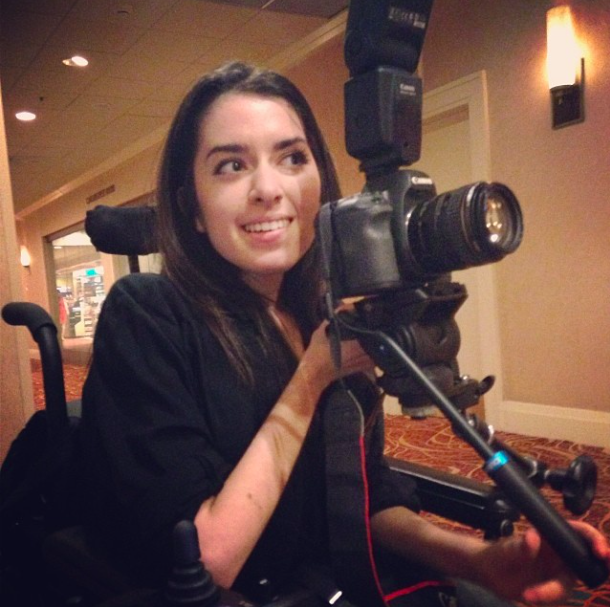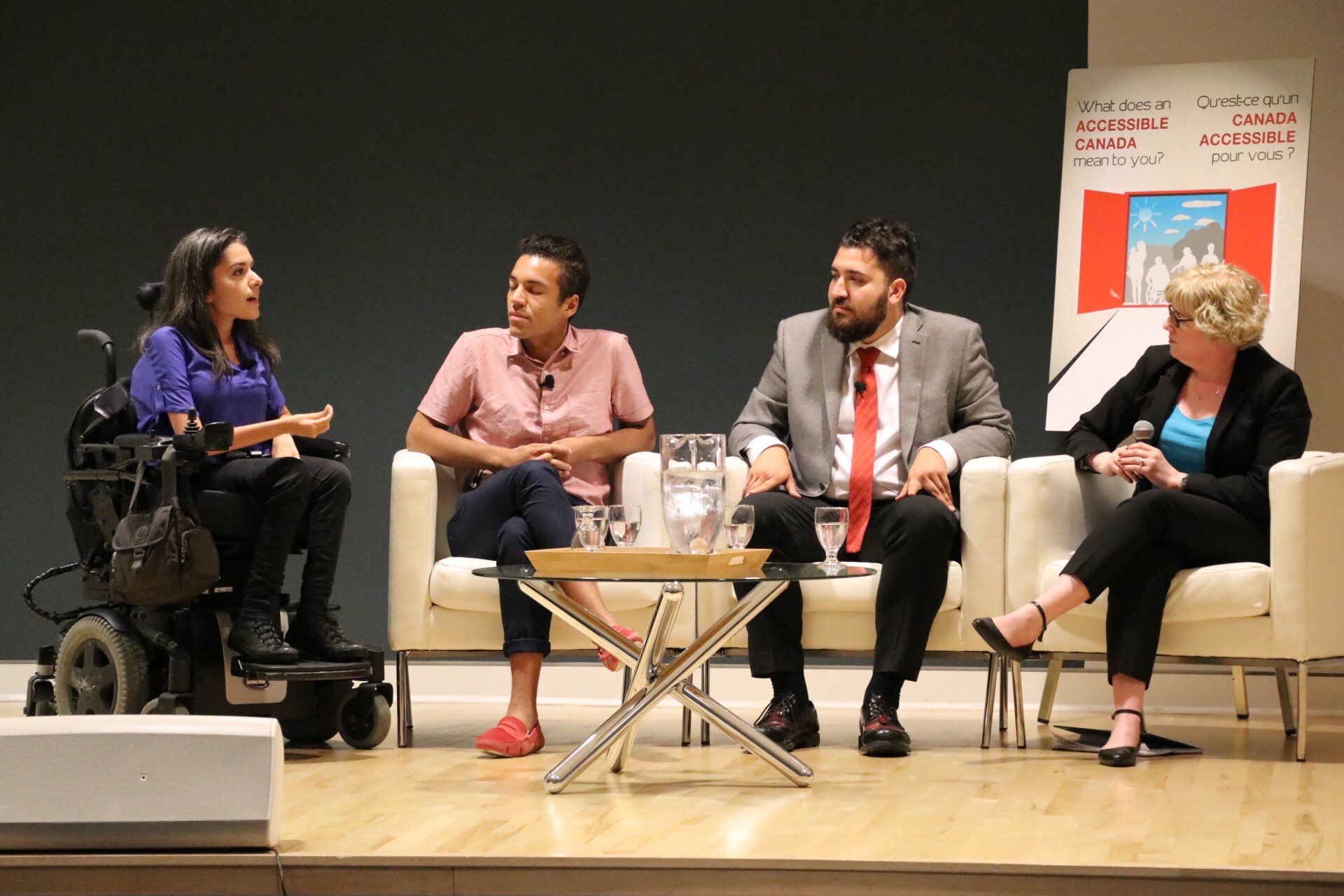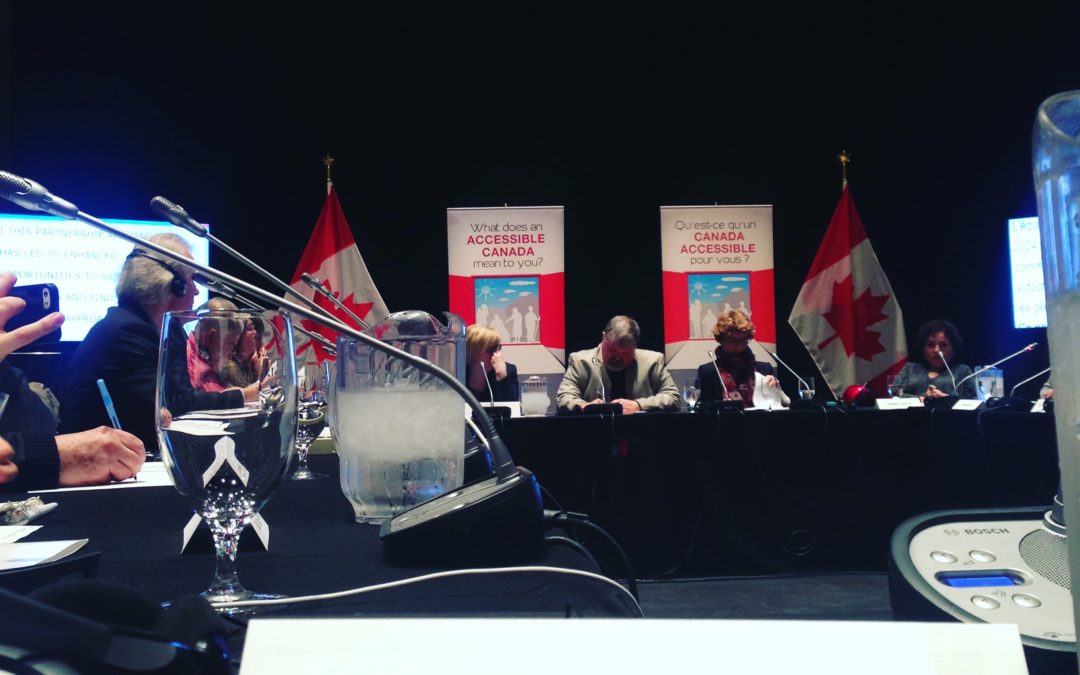We live in one of the most exciting times. It is a time for innovation, for new ideas, for inclusion, and a celebration of diversity. We are on our way to establishing legislation that will break down barriers for millions of Canadians, recognizing the importance that accessibility plays across the nation in defining an Accessible Canada.
Last Week I was invited by the Canadian government to share thoughts on accessibility innovation, contribute to Accessible Canada’s consultations on culture change, and celebrate International Day of Persons with Disabilities.
I had a chance to connect with advocates, members of parliament, and business owners. We discussed the importance of accessibility legislation and shared ideas on how to develop a plan with teeth. I also had the honour of delivering a keynote address during the IDPD 2016 event at the Canadian War Museum.
Here are some of my remarks:

I grew up with a disability. I was born with a type of Muscular Dystrophy and I’ve used a wheelchair throughout my entire life. I went to a regular school, and being the only student with a disability, I often had to build creative solutions on the fly just in order to engage with my classmates, and participate in activities.
If there was a place that wasn’t accessible, I would find ways to make sure I was included. I would create makeshift ramps to bridge gaps, or re-design an entire afternoon, convincing my teachers that there were other ways to do things. I remember on one field trip to Quebec city, the cobblestone streets were rough and uneven and many places were not accessible to me. Many of the streets were under construction. So we found pieces of plywood and would literally lay them in front of my wheelchair as I went through the streets. That is how I got around that week.

On another trip to New York city, my wheelchair broke down. It literally fell out of an airplane. I’m not even kidding. Now stuck in a busy city without my usual means of mobility, I started taking pictures with a small tourist camera. I reframed this challenge as an opportunity and I soon found I had discovered a new love…photography. Over the next couple years I became so passionate about photography. I found myself putting off homework assignments to build elaborate photo shoots, and I had my camera on me at all times. I still do. When I graduated university I began working as a photographer in fashion and portraiture. A lot of the camera lenses were very heavy for me but I still wanted to use them, so I would repurpose gear and equipment, finding creative ways to take the photos that I wanted.
My story is not unique. Speak to any person with a disability and I promise you, they could tell you stories similar to mine, of navigating inaccessible places, or finding their own creative solutions to do things.
That kind of thinking is what sparks innovation. It’s that kind of problem solving, that people with disabilities come to naturally because their life asks for it. I like to say that people with disabilities have a natural knack at being entrepreneurial because the reality is that we often have to come up with new ways of doing things all the time.
People with disabilities do a lot of problem solving, and really that is what innovation is all about. It’s about finding creative solutions to solving problems…like a lack of accessibility.
To me, accessibility is about enabling and empowering people, all people. Accessibility is not a product or a service or a solution to a fix…it’s a mindset.
There is an assumption that accessibility is only for people with disabilities. I want to challenge that notion. People are not disabled, it’s the environments that we live in that are disabled. The same way we use cars to get where we want to go, or develop new technologies to enable us further, everyone benefits from accessibility. Curb cuts, electric toothbrushes, auditory announcements, and captions on TV and Facebook…all these things make our lives easier. These are all accessible technologies.

Everywhere I go the first question I have to ask is “is this place going to be accessible?” The reality is that millions of places are not accessible, and trying to determine which actually are from the ones that are not, can be a full time job. I decided I needed to do something about it, and that is how AccessNow was born. Over a year later we have built a passionate community focused on creating access for all. We have shared information about thousands of places in 30 countries around the world: Australia, China, Europe, The United States, Canada and many more.

Through the power of community we have the potential to create access worldwide, and that is really what AccessNow is all about. It’s about enabling all people to find the access that they need in order to live the lives they want to live. And together we can create turn this vision into reality.
We are on our way to achieving this vision but it is not the work of a few, it is the work of many. We all have a part to play in creating an accessible world. I invite you to join this movement by sharing information on AccessNow, or contributing to our social media conversations, or finding creative solutions in your own life to help remove barriers in your communities.
Canada’s strength comes from its diversity, and people with disabilities are part of that diversity. In recognizing the strength that people with disabilities have to offer, we can help change the landscape of our country to be one that is more inclusive for all.


